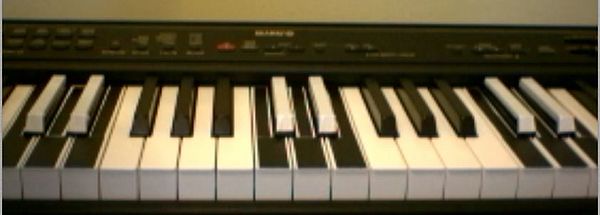It can be useful to re-color the keys on a traditional keyboard according to a 6-6 pitch pattern, coloring one wholetone scale black (C D E F# G# A#) and the other white (F G A B C# D#). This helps clarify the interval relationships between the keys.

Playing on a keyboard with this 6-6 color scheme helps the musician to see the interval patterns between the keys as she plays. The consistent interval patterns of scales and chords are made readily apparent by the regularity of the 6-6 color pattern. For example:
- Adjacent keys that are different colors are always half-steps.
- Adjacent keys of the same color are always whole-steps.
- Any major scale can be played as three notes of one color followed by four notes of the other color.
- Any minor scale can be played as two notes of one color, followed by three of the other color, and then two of the first color.
- Major thirds are always two notes of the same color with one note of that color between them.
- Minor thirds are always two notes of a different color with one note of each color between them.
- Of course, major and minor triads are combinations of major and minor thirds.
(These patterns are easier to see and hear than to describe with words…)
The image below shows a MIDI keyboard that has been re-colored using black and white electric tape.

The regularly alternating 6-6 pattern is analogous to the distinction between odd and even numbers, and how they help reveal patterns in mathematics. It also correlates very well with chromatic notation systems that exhibit this alternating pattern in their staff line pattern or in the shapes or colors of their noteheads. For example, see the 6-6 notation systems in this tutorial. The 6-6 pattern and its usefulness are mutually reinforced by having it present in both one’s notation system and instrument.
Given that the color scheme has changed, it may be useful to refer to the traditional sets of black and white keys as “back keys” and “wide keys”. This is nice because, as well as being an accurate description, the words are close to the original “black keys” and “white keys”. (This was Doug Keislar’s proposal for a new way to refer to these groups of notes.)
This color scheme provides a great improvement over the traditional keyboard, which (like traditional notation) obscures the interval relationships between notes, and the consistent interval patterns of scales and chords.
Of course, taking this principle a step further, one could change the physical arrangement of the keys so that they are isomorphic in their physical layout, rather than in their color scheme, as on a Janko keyboard.